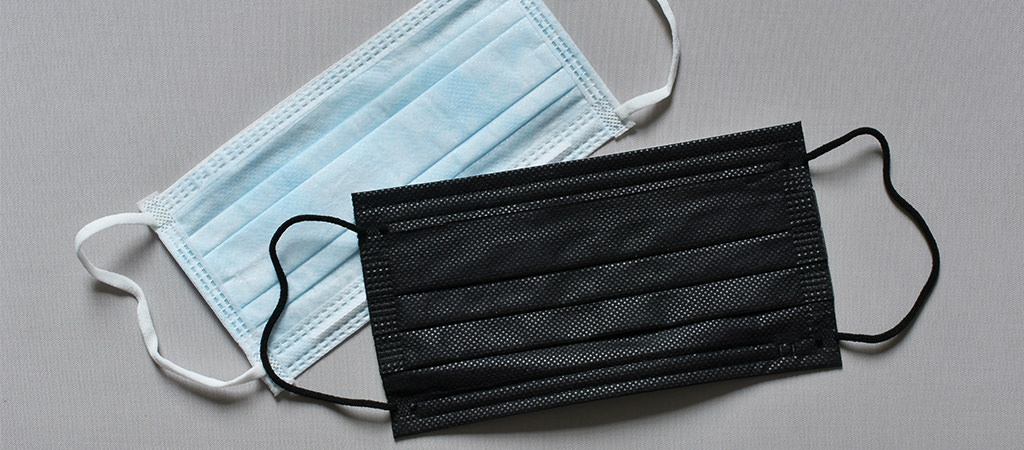
Has the COVID-19 Pandemic brought about complicated issues that can (and are) having an impact on the mental health of children, adolescents, and teens, as well as adults? YES! Research throughout the country and the world is showing that the COVID-19 Pandemic is affecting the mental health of children and teens and that overwhelming stress, anxiety, and depression are widespread.
My background is in early childhood education, psychology, and management. I have experience in the dental world as the wife of a practicing dentist, a team member, management consultant, professional speaker and coach. The subject of my doctoral dissertation was stress management. With this background, it is my goal to bring information and guidance that will benefit you, your parents, and your young patients.
During this multi-part series, the following aspects of stress, anxiety, depression, and suicide will be covered as they relate to the Pandemic.
- How to recognize signs and symptoms that deserve attention.
- How to respond and manage stressors and the child/youth who experiences them.
- How to take care of yourself through self-care and mindfulness so that you can take care of others.
WHAT IS STRESS?
What is stress? According to Dr. Carl Caplan in Dental Practice Management Encyclopedia, the term ‘stress’ refers to “the physiological and psychological responses of an individual to demands from the environment (termed stressors)”. William H. Hendrix, Ph.D. defines stress as “an individual’s cognitive interpretation (or appraisal) of internal or external events judged (consciously or unconsciously) to be threatening, harmful or challenging.” This definition indicates that different stressors affect different people in different ways. A situation that might be perceived as stressful to one person might not be stressful to another. This is true for members of the dental team and is true for parents and children, as well.
Peter Hanson, M.D., says that, “Stress is neutral until it lands on a person. What that person has chosen to do about past stresses, and what the person chooses to do in response to present stress, will determine the outcome.” Dr. Hanson points out that “the answers to the problems of stress control are within the grasp of each individual.”
Uncontrolled stress can affect the mind. It can take its toll on emotional well-being while it drains energy and vitality from a person—no matter what the age of that person. Stress can distort thinking and the way a person feels about him or herself. Unbridled, stress can chip away at a feeling of self-worth and self-esteem. It can affect relationships with others making it difficult to relate in a constructive way with people at school and at home. Friendships may be at risk—or perceived to be so. Stress can also drain the energy needed to participate in activities in or out of school.
Stress may be bad (distress); i.e. illness, loss of a loved one, loneliness, etc. Stress may also be good (eustress) i.e. getting ready for an athletic activity, presenting in front of the class, etc. Stress often occurs as the result of change (e.g., virtual school or work, interrupted routine, being home alone, etc.). Change is difficult and frightening so having ways to respond to stress can prevent chronic stress and even result in a growth experience. Numerous medical and research institutes have determined that approximately 80% of illnesses being treated in America today can be traced back to distress in one way shape or form. And this is occurring in our youth today.
BEING WATCHFUL
The COVID-19 Pandemic has created many stressors (that which creates stress). Each of you have learned how to handle and manage many of these. However, day after day, something new may arise! This happens for parents and children/youth, as well. While the virus is well on its way to being “controlled”— (we all hope and pray)—there continues to be issues related to both physical and mental health that require our attention—all of us.
Individuals and practices are taking responsible actions to “do their part” to protect themselves, their families, teammates, and patients. However, people remain “on edge” because of the Pandemic. Why?
- People are unsure about what’s on the horizon tomorrow.
- Things change rapidly
- The news is “available” 24 hours per day and—for the most part—is negative
- The media coverage –and much of social media–highlights the worst of circumstances and rarely identifies anything that is good (although that does happen from time to time)
- Most people have experienced a person who has contracted the virus or perhaps have lost a loved one or close friend to the disease.
` And so, with these ongoing issues facing the world—parents or care providers may find that their kids are presenting behaviors that are “unusual”. This is important to note. Noting changes of behavior is not a reason to panic (which is stressful unto itself). But it is important to recognize that stress may be turning into distress– either psychological or physiological—or both. This can lead to either bodily illness or mental/emotional challenges. Both are deserving of care and attention.
SIGNS TO WATCH FOR FOR YOUNGER CHILDREN
The first and most important step in stress management or stress control is to identify the “stressor”—what is it that is causing the stress in the first place.
- Increased attention on their body and speaking often about illness—or being concerned about being sick. If a child is frequently asking for assurance that they are healthy and not sick, this may be their method of coping with concern about contracting the virus. For example, if they say they need medicine, or they need their temperature taken, or they don’t want to eat, or they say “I don’t feel good”, these could be signs that this child is having difficulty handling stressors. It will be important to listen carefully and caringly to find out the source or “the heart” of the concern or stress and let the child express him or herself. Reassurance rather than rebuke is essential. Of course, you will want and need to determine if they are, indeed, ill—and if they are, take appropriate measures.
- Increased Separation Anxiety. If a child is overly stressed, they may only feel safe when they are with the people they are closest to: mom, dad, grandparents, caregivers, etc.—whoever makes them feel safe and secure. They may be more “clingy” than usual and need to be close, get more hugs, and more affection during times of stress. Sometimes they just don’t understand what is going on—and things are impossible for them to decipher, so they resort to what they know—being wrapped safely in the arms of their loved ones.
But, if a child shows intense, prolonged “distress” when they are separated from their parents or caregivers and are not able to function– or cry without stopping for long periods; or if the child cannot sleep or will not sleep alone or has a “come- apart” if the parent is out of sight, then these are signs that the emotions are potentially out of control and that the child may need support.
- Altered mood and changed behavior. A parent, teacher, or you as a caregiver may notice a remarkable change in the behavior of a child whom you have known and observed over time. Try to have a conversation with the child about how they are feeling. Remember that the best communication skill to use is the skill of listening—listening without judgment. Let the child say what he/she is thinking and feeling. Do not tell him/her what you think they should be thinking or feeling. That won’t make it happen!
Changes that you may observe can range from crying, sadness, irritability, anger, being afraid, aggression, lethargy, wanting to be alone, detached.
A child may cry more often and more readily and may not be able to go to sleep easily and/or may awaken in the night.
- Isolation and detachment: While schools have been shut down in many places, children have been home. In many cases, children have been alone at home. Parents have gone back to work and the children are doing virtual school alone. This has been true of children and teens. Certainly not in all cases, but in many. Aloneness and isolation have been difficult for many children who have—historically—been gregarious and have found joy in friendships and companionship.
In addition, children and teens need structure and routine. Without structure, many kids have resorted to chaos. Chaos breeds stress. One way children (and teens) handle this kind of chaos is to disengage, detach and slink further and further into isolation. Many young people hide behind the screen of their electronic devices and will hardly communicate. They don’t want to engage and or come out of their room. They shut down. What once may have been activities they liked, now are of little interest. These are signs. These can serve as clues that this child or young person is having problems dealing with stress and their coping mechanisms are less than healthy. Stepping in with assistance may be appropriate.
ADDITIONAL SYMPTOMS FOR OLDER CHILDREN, ADOLESCENTS AND TEENS
- Inability to Focus. If a young person is overwhelmed with stress or worry, and if they cannot concentrate on school work or school projects, this is a symptom of “distress”. There are methods of handling and managing distress (which I will be covering) that may be of benefit to your young person. Otherwise, their schoolwork may suffer—and more than likely will, indeed. This can impact grades—and perhaps graduation for some.
- More arguments, conflicts, and disagreements with both family members, and friends. More isolation and a growing desire to be alone.
- Noticeable differences in eating habits. You may notice either weight gain or weight loss. Your young person may eat all the time or may never want to eat. You may have trouble getting him/her to sit down with the family to eat a meal.
- Grooming—or the lack of grooming! Some young people will stop caring about how they look—and may stop taking good care of themselves. Personal hygiene may suffer. If they have chosen to isolate—or if their school is closed and they are doing everything virtually, they may see no reason to take care of themselves. You may never see them out of sweatpants and a t-shirt! (maybe the same ones!)
- Alcohol and drug abuse. Research is showing an increase in both alcohol and drug use—and abuse. Dr. Andrea Raby of Bayless Integrated Healthcare of Phoenix states the following, “There is an epidemic hidden in a pandemic”. Dr. Raby says “There is a threat to our youth who are now at increased risk of substance use, disorder, and overdose in the wake of the COVID-19 pandemic.”
I will delve into this intricate subject more intensely in an upcoming article.
As we begin this study of an emerging concern for our children and young people, I will be laying groundwork—defining terms, identifying symptoms, preparing you to identify symptoms and giving you suggestions for support methods and referral sources. Together—parents, teachers, ministers, caregivers—dental, medical, psychologists—the “village”—we can support and help our youth to handle and come out stronger on the other side of this Pandemic. And each of us will be stronger, as well.
Do your best to stay positive. Take care of yourself. Remember: You can’t take care of anyone else if you don’t first take care of you. In my next article, I will cover taking care of you and others. Then, we will tackle anxiety!


